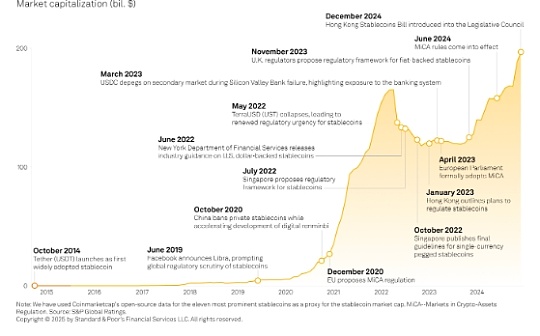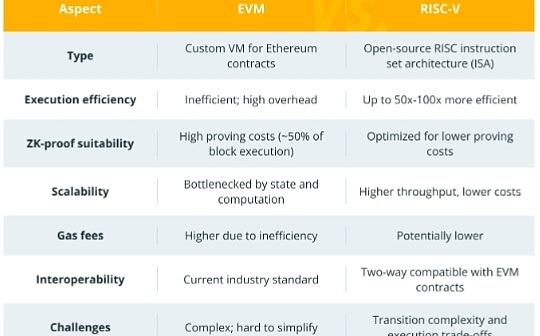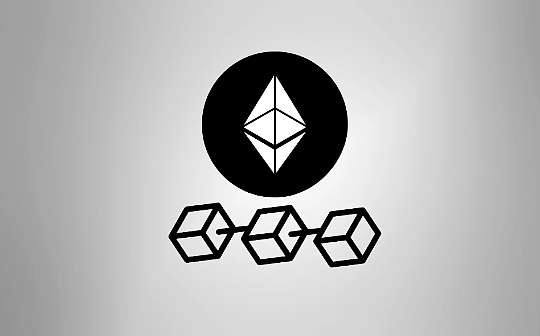
Author: Robert D. Knight, Cointelegraph; Compilation: Baishui, Bitchain Vision
It is not easy to master cryptocurrencies.Even if you already understand the difference between Bitcoin and Ethereum and Proof of Work and Proof of Stake, there are still a lot of new terms to learn and understand.
But even for quite experienced cryptocurrency enthusiasts, there are still some terms that are difficult to understand.Here are seven terms that few people in the blockchain field can fully or deeply understand.
Blobs
In a 1958 film starring Steve McQueen and a 1988 remake, Blob is a jelly monster resembling an amoeba that scares the residents of the town and grows bigger and bigger as they devour them,Becoming more and more popular.
In cryptocurrencies, especially in Ethereum, blobs (binary large objects) are large blocks of data that are not needed by Ethereum Electronic Virtual Machines (EVMs).Blob data is saved on the chain for about 20-90 days and then deleted.

Source: John Irving
The result is a more cost-effective and scalable blockchain.As part of the Ethereum Dencum update, blobs are often discussed at the same time as the next term in this list.
A blob may also refer to a block of data stored on a decentralized storage system such as IPFS or Filecoin.These blobs are encrypted and stored on multiple nodes.
Finally, a blob can also refer to a transaction blob on Monero, that is, binary data that the transaction is before it is broadcast to the network.Since Monero is a privacy chain, the structure of these blobs can remain anonymous.
And this is a lot of blobs.
Rollups
Rollup is a way to process transactions on the Layer 2 protocol that can free up valuable space in the base layer.Rollup folds transactions one by one on the second layer, sometimes folding dozens of times, then scrolling them together and sending the data back to Layer 1.
There are two main types of Rollup, optimize and zero-knowledge (ZK) proof.
Optimistic Rollup is a pretty clear term.This means that Rollup runs with the “optimistic” method, assuming the transaction is valid unless the validator proves it to be wrong.They will check the validity of the transaction only if there is a dispute.
ZK Rollup will prove the transaction without revealing any transaction data.Therefore, it is called “zero knowledge”.
ZK Rollup provides instant termination because encryption proof ensures data is valid.
In many ways, Rollup is to your standard blockchain transactions just like Calzone is to regular pizza slices.By scrolling, you can put more things in.
Byzantine fault tolerance
This is one of the classic terms for blockchain and a key feature of the technology, but for most people, they simply don’t take the time to think about it.
The Byzantine General Problem is a theoretical exercise that describes the difficulty of dispersing parties to reach consensus in the absence of a credible centralized entity.That is, it strives to address the possibility that bad people create false information to produce adverse results in certain situations.
Specifically, generals without direct communication must attack Byzantium at the same time to win.If one of the generals retreats, or sends an attack signal but then retreats, the battle will end in a defeat; worse than the coordinated retreat of all the generals.
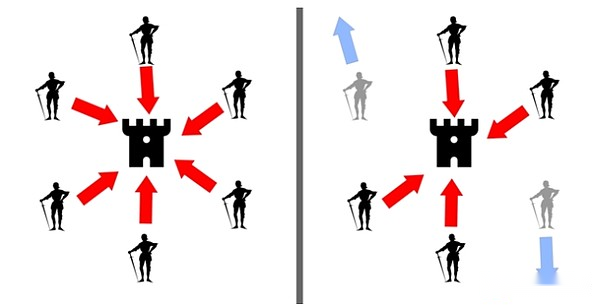
On the left, if all the generals attack at the same time, they will win.On the right, if two generals mistakenly send off an attack signal and then retreat, the others will be defeated.Source: Lord Belbury
Satoshi Nakamoto solved the Byzantine General problem of Bitcoin by using a proof-of-work consensus mechanism.Creating blocks takes a lot of time and effort, so they are motivated to provide accurate information.
Byzantine failure is a bug in a decentralized computing system that displays different errors or results to different participants, just like the Byzantine General problem.
Therefore, Byzantine fault tolerance is the resilience of the computing system to generate such failures.
We hope this is not an overly Byzantine explanation.
Original Danks shards
Sharding is a way to split the ledger into smaller parts (called sharding).
But proto-danksharding is one of the most opaque terms in the crypto-world vocabulary.This term has no particular guiding significance.Is proto an abbreviation for the prototype?Is this the same dank in your favorite meme folder?Both assumptions may be fairly reasonable, but both are wrong.
protolambda and Dankrad Feist first proposed the idea, which they named after themselves, proto-danksharding is a type of transaction that accepts the aforementioned blobs.The solution using blob is designed to overcome Ethereum’s long-standing high gas fees and low transaction throughput problems.
The Tier 2 Summary uses blobs to bundle transactions and submit them to the Ethereum base layer without overwhelming it.
But if proto-danksharding looks like a confusing and mysterious wording, you can choose to use a more instructive name to represent the process; EIP-4844.
Think about it again, the term proto-danksharding is not that bad.
DVT—Distributed Verifier Technology
Most people in the cryptocurrency field are already familiar with the validators that approve transactions in the proof-of-stake consensus model.
DVT takes this concept and spreads the process across multiple validators.As Lido describes, DVT “as a system, it runs in a similar way to the multisig setting that runs the validator.”
They call it “simple DVT”, but its simplicity remains a mystery.
Ultimately, DVT utilizes multiple operators instead of relying on a single operator, increasing resilience and mitigating single point of failure.
Dynamic reslicing
Dynamic reshaping is not the old shard from your grandmother’s time.Dynamic reshaping is a relatively new term that Near Protocol’s marketing team calls “the holy grail of sharding,” but it also creates a new vocabulary that cannot be understood immediately.
Based on the concept of blockchain sharding, reshaping occurs when the network adjusts the number of shards according to the load.
An overloaded shard can become two shards, while two underutilized shards can become one.
Nonce
Nonce is one of the terms most people encounter when they discover cryptocurrencies early on and then completely forget, just like the personal names of a large group of people you just met at a party.
In the Bitcoin blockchain, a random number is a number used in the block header and is then cryptographically hashed.This is a number guessed through trial and error, used to decide which miner generates the next blockchain.
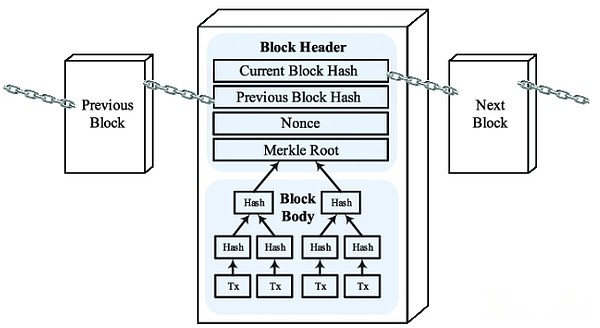
Data structure of Bitcoin blocks containing random numbers.Source: Research Gate
Random number generation makes the mining process more fair and transparent.This requires a lot of computing power and energy, and in some cases, miners may need to adjust the random number multiple times to resolve a block.

